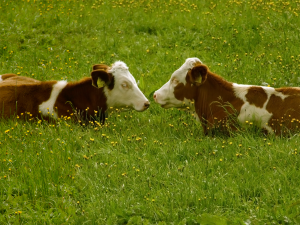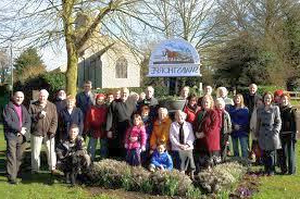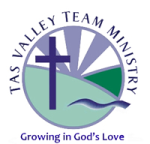 Sally Gaze is getting away to the country.
Sally Gaze is getting away to the country.
Lots of people have a very set idea as to what life, or ministry, in the countryside is like – usually people who have never lived or ministered here! Sometimes their image owes more to The Archers than reality, but the fact is that rural contexts are very diverse and the countryside is changing very quickly indeed.
A conference I'm involved in at the beginning of May will explore discipleship in these contexts. Those booking for making and growing disciples in the countryside were asked to let us know a little more about their own settings and the variety is amazing. One minister's parish covers 350 miles and includes ten distinct communities: four islands, five villages accessible by road and one by sea on the mainland. In a classic understatement he says, 'The traditional parish model cannot provide a model of ministry that enables mission and innovation to be developed.'
It's also interesting that there are recognisable differences in what people think of as a rural setting. A lot of places that describe themselves as rural would not be seen as such by others in more remote areas; there are real regional differences being played out against the same backdrop. Many of the 'rural' areas surrounding the London belt for instance would not be seen as such by many working in far flung areas of England, Scotland or Wales. That's fine; we wouldn't say one 'urban' context is exactly the same as another simply because it's urban. The same is true of the countryside.
In a major cultural shift in recent years, many people – whose families have lived and worked in the same rural area for generations – can no longer afford to live there. Instead others move in from the towns; some settle well, but others have a very different approach to life and the area they inhabit. This means there can be several 'villages' within a village as the very different communities live side by side but appear to have very little else in common. The challenge as we minister in these situations is to share the good news of God's love with all of the people in the area, whether they are long-time residents or newcomers.
Some ministers, seeing the unity of the church as being vital to mission, are concerned that the development of fresh expressions of church is something that will lead to further segregation, but I believe diversity is good for unity. It is as we listen to people – and honour their different needs and preferences – that we communicate the love of God.



 A few years ago, when the working party for the best-selling Mission-shaped Church report asked questions about church-planting in a questionnaire, there was a less than enthusiastic response from rural areas. As one Church of England official wrote,
A few years ago, when the working party for the best-selling Mission-shaped Church report asked questions about church-planting in a questionnaire, there was a less than enthusiastic response from rural areas. As one Church of England official wrote,
 Gradually the church has got more involved in running events for the whole village. In 2012, the old church building – which is the only public building in the village – is being reordered to make it suitable for wider community use. When the work is done there are hopes to re-launch a monthly all age service with a new team and a mission project with an environmental focus.
Gradually the church has got more involved in running events for the whole village. In 2012, the old church building – which is the only public building in the village – is being reordered to make it suitable for wider community use. When the work is done there are hopes to re-launch a monthly all age service with a new team and a mission project with an environmental focus.
 The story of Tas Valley Cell Church in south Norfolk was first told on expressions: the dvd – 2. Its leader, Sally Gaze, tells what has been happening since the cameras rolled.
The story of Tas Valley Cell Church in south Norfolk was first told on expressions: the dvd – 2. Its leader, Sally Gaze, tells what has been happening since the cameras rolled. Tas Valley Team Ministry is a happy family of churches serving the villages of Newton Flotman, Swainsthorpe, Tasburgh, Tharston, Saxlingham and Shotesham. Congregations were very welcoming but the newcomers were being asked to join the flower rota or help out with the fete. They didn't have the opportunity to discuss issues such as how faith might help with their marriage, children or work. The new Christians found this quite difficult to cope with after having had the chance to do that every week at Alpha.
Tas Valley Team Ministry is a happy family of churches serving the villages of Newton Flotman, Swainsthorpe, Tasburgh, Tharston, Saxlingham and Shotesham. Congregations were very welcoming but the newcomers were being asked to join the flower rota or help out with the fete. They didn't have the opportunity to discuss issues such as how faith might help with their marriage, children or work. The new Christians found this quite difficult to cope with after having had the chance to do that every week at Alpha. The numbers are still growing, though much more gradually than at the time of the DVD. Now there is more and more of a crossover with the Sunday congregations and we encourage the mixing and supporting of each other. The cell continues to meet weekly though the cell and traditional congregations will also get together three times a year – for instance, we recently came together for a Passover meal.
The numbers are still growing, though much more gradually than at the time of the DVD. Now there is more and more of a crossover with the Sunday congregations and we encourage the mixing and supporting of each other. The cell continues to meet weekly though the cell and traditional congregations will also get together three times a year – for instance, we recently came together for a Passover meal. Some may question the role of the cell church but I think it can help to take the pressure off traditional congregations to do the things they can't do for all sorts of reasons. I've had discussions in the past where the focus has been on 'How to get young people in?' Simply including a modern song in the service really isn't going to do the trick. I believe that many churches, faced with this sort of challenge, would say that they were not able to change sufficiently to meet it.
Some may question the role of the cell church but I think it can help to take the pressure off traditional congregations to do the things they can't do for all sorts of reasons. I've had discussions in the past where the focus has been on 'How to get young people in?' Simply including a modern song in the service really isn't going to do the trick. I believe that many churches, faced with this sort of challenge, would say that they were not able to change sufficiently to meet it. Tas Valley Cell Church is currently seeking a Bishop's Mission Order and we are trying out various things as we develop and change. We now have cells with children as well as adults, that has seen mixed results and we continue to explore how we disciple people in families.
Tas Valley Cell Church is currently seeking a Bishop's Mission Order and we are trying out various things as we develop and change. We now have cells with children as well as adults, that has seen mixed results and we continue to explore how we disciple people in families.